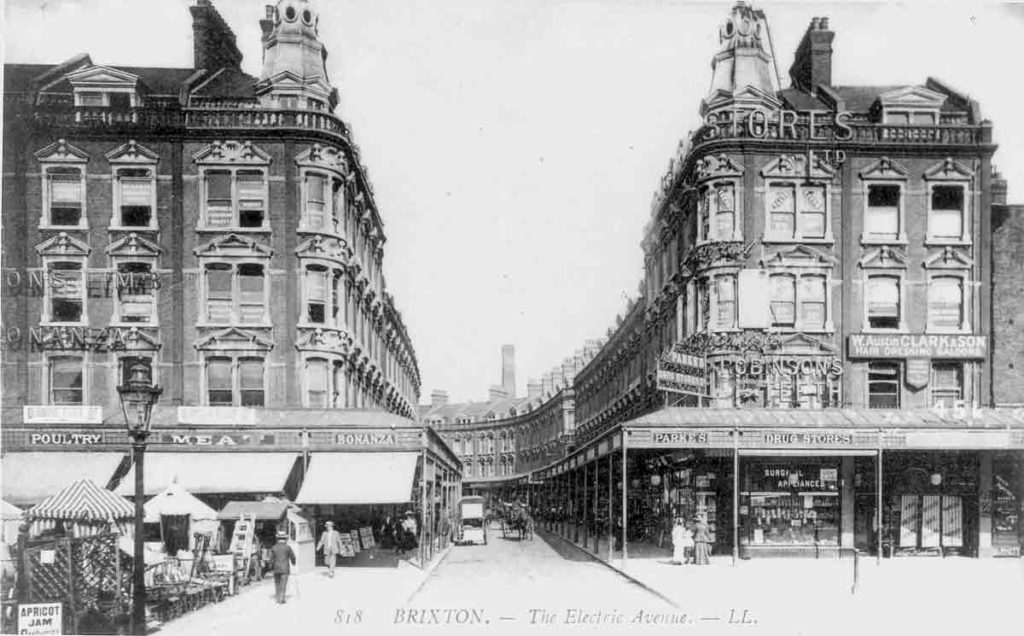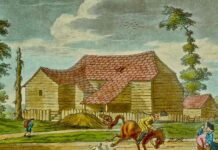

Today Brixton is regarded as one of London’s most culturally interesting destinations, and that diverse social heritage exists within a built environment layered with history, some of which is still visible.
The current Brixton Road follows the route of a Roman road that ran from London to the South coast. Maybe next time you’re waiting to cross the high street you can think back 1,800 years and imagine Romans in togas and sandals passing where you stand!
It took a long time after that for the area around the road to be built on, but by the Georgian period there were large, grand houses with extensive gardens surrounded by farmland and orchards (such as Raleigh Hall which now houses the Black Cultural Archives).
Brixton as we know it today is largely a result of rapid Victorian development after the arrival of the railway station in 1862, when new streets with smaller houses were built to accommodate a rapidly growing population. To serve them, retail entrepreneurs converted houses along the main road into shops and later built some of the first and finest department stores in London, including the surviving buildings of Morley’s, Bon Marché and The Department Store on Ferndale Road.
By the late 1880s with the creation of Electric Avenue, a purpose-built shopping street and the first to be lit by electric lights, Brixton was a thriving middle-class suburb and major shopping centre.
Later the building of theatres, the cinema, and the indoor markets in the 1920s-30s cemented the town’s reputation as the shopping capital of South London.
Generations of migrants, not least the first arrivals from the Caribbean as part of the Windrush Generation, have since built on this spirit of enterprise, creativity and entertainment, continuing Brixton’s reputation as a place of distinctive cultural interest and independent trade.
After WWII modern buildings replaced some of the Victorian housing, with the Brixton Rec (now Grade II listed) and Southwyck House (the Barrier Block) appearing in the 1980s as somewhat uncharacteristic neo-brutalist additions, but now more appreciated for the quality of their design.
Brixton is now a complex and varied landscape where the railway line, arches and roads interconnect industrious areas, shops, housing and green spaces, all brought to life by the people and stories of this historic but forward-looking town.








